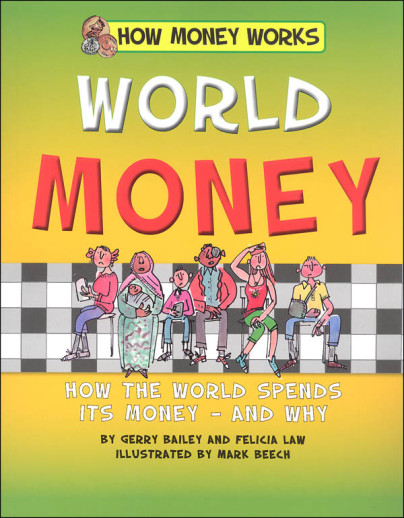We use cookies to make your experience better. To comply with the new e-Privacy directive, we need to ask for your consent to set the cookies. Learn more.
World Money (How Money Works)
Money flows around the world as countries buy and sell from each other. It looks different, has different names, and different values. So how do we really know what money is? Can we trust it? Discusses foreign currency exchange, international trade, world wealth and world poverty in an easy to understand, accessible manner. Chapters include information on the World Bank, International Monetary Fund, The G7 and various charitable organizations throughout the world. Includes a table of contents, glossary, index, websites and books for further information, and discussion questions. The How Money Works series gives an in depth, yet easy to understand look at how economic systems work. From understanding personal finance to global trade, How Money Works provides insight to and appreciation for financial literacy. Topics in the series include personal, family, country, and world finance.
Sometimes money conversations are just too abstract for young learners. These lively and colorful books relate money matters in a way your elementary/middle-schoolers will understand. The text is broken into small bits using language that makes sense. At the same time, kids will learn loads of new vocabulary words. I love the structure of building up from a personal to a global framework. Color photos and illustrations, including charts & graphs, show the reader what is important. Kids are never too young to learn how to handle money, and this is a great age for teaching concrete concepts and expanding out into the world around them. Each book has an index, glossary, discussion questions, and additional resources to explore. Perfect for a classroom, library, or a unit study on money and economics. 7.5"x 9.5", 64 pgs each, pb. ~Sara
| Product Format: | Paperback |
|---|---|
| Grades: | 4-6 |
| Brand: | Norwood House Press |
| Author: | Gerry Bailey & Felicia Law |
| ISBN: | 9781684040711 |
| Length in Inches: | 9.5 |
| Width in Inches: | 7.5 |
| Height in Inches: | 0.125 |
| Weight in Pounds: | 0.4 |
Be the first to review this item

